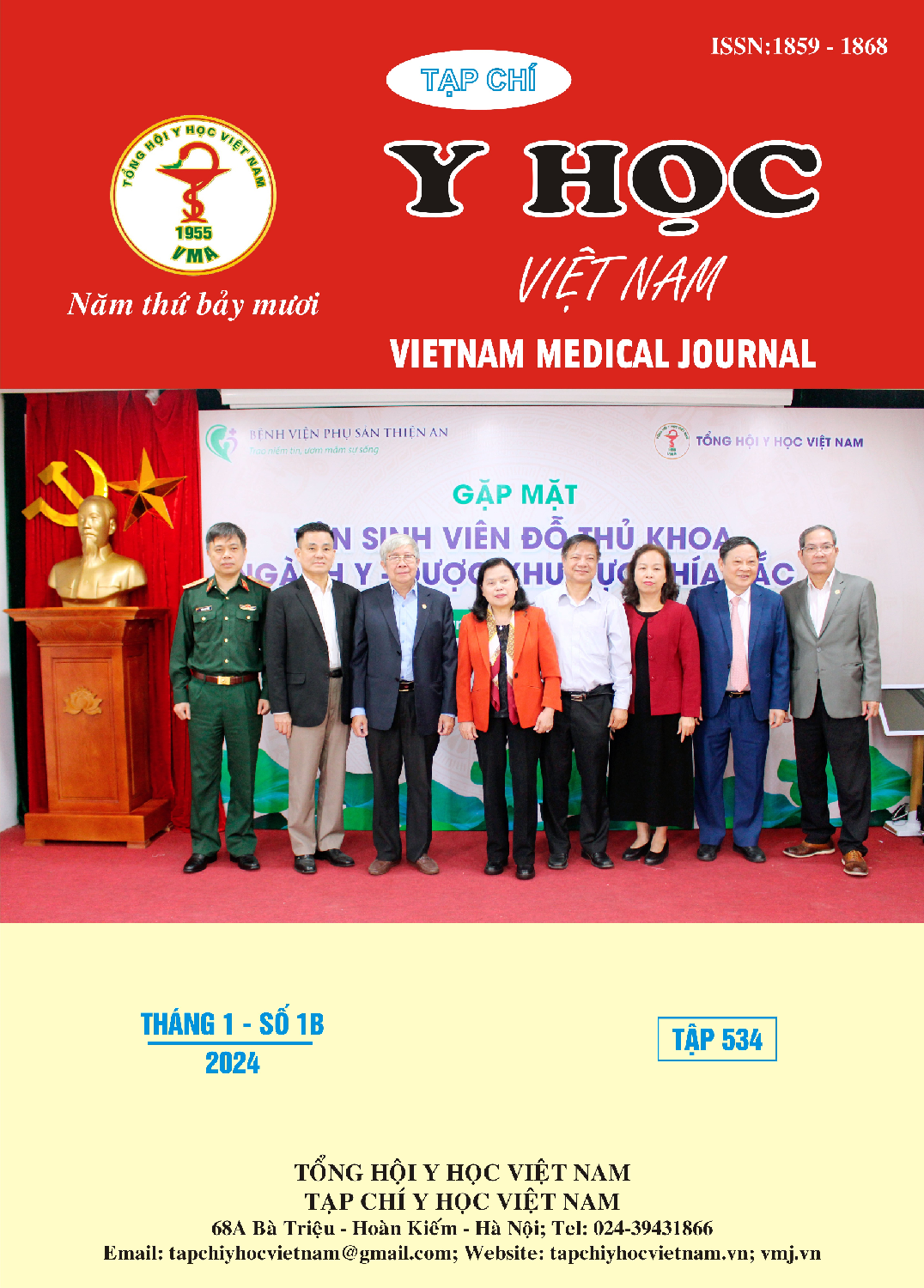STUDYING THE CORRELATION BETWEEN THE DEGREE OF CORONARY ARTERY LESIONS, RISK FACTORS AND SEVERITY OF TYPE 2 DIABETIC PATIENTS
Main Article Content
Abstract
Background: Diabetes has recently become a worldwide health problem which is increasingly prevalent in developed and developing countries. Coronary artery diseases among diabetes patient is severe and highly fatal. Coronary angiography can give an assessment of coronary artery lesions by SYNTAX score, which helps clinicians to figure out the optimal treatment for each patient: optimal medical treatment, stenting intervention or coronary artery bypass graft. Objectives: To evaluate the correlation between the degree of coronary lesions and risk factors with the severity of diabetes. Methods: Cross-sectional study divided into two group: study group with 60 diabetic patients having detected significant coronary artery lesions and control group with 65 non-diabetic patients with detected significant coronary lesions. Results: Risk factors of coronary artery disease in diabetic group are higher than non-diabetic group (exception for smoking). Average SYNTAX score in diabetic group is higher significantly than non-diabetic group. There is medium positive correlation between SYNTAX score and duration of diabetes (r = 0.484; p = 0.001). There is low positive correlation between SYNTAX score and HbA1C (r = 0.297; p = 0.012), microalbuminuria (r=0.306; p = 0.001). There is medium negative correlation between SYNTAX score and LVEF (r=0.4388; p = 0.0012). Conclusion: There is a correlation between the degree of coronary artery lesions and severity of type 2 diabetic patients.
Article Details
References
2. Association A.D. (2018), "2. Classification and Diagnosis of Diabetes: Standards of Medical Care in Diabetes—2019", Diabetes Care, 42(Supplement_1), pp. S13-S28.
3. Bertoluci M.C., V.Z. Rocha (2017), "Cardiovascular risk assessment in patients with diabetes", Diabetol Metab Syndr, 9, p. 25.
4. Chu Z.G. et al (2010), "Characteristics of coronary artery disease in symptomatic type 2 diabetic patients: evaluation with CT angiography", Cardiovasc Diabetol, 9, p. 74.
5. Esper R.B. et al (2018), "SYNTAX Score in Patients With Diabetes Undergoing Coronary Revascularization in the FREEDOM Trial", J Am Coll Cardiol, 72(23 Pt A), pp. 2826-2837.
6. Mamas M.A. et al (2014), "Impact of left ventricular function in relation to procedural outcomes following percutaneous coronary intervention: insights from the British Cardiovascular Intervention Society", Eur Heart J, 35(43), pp. 3004-12a.
7. Selvin E. et al (2005), "Glycemic control and coronary heart disease risk in persons with and without diabetes: the atherosclerosis risk in communities study", Arch Intern Med, 165(16), pp. 1910-6.
8. Sleight P. (2000), "The HOPE Study (Heart Outcomes Prevention Evaluation)", J Renin Angiotensin Aldosterone Syst, 1(1), pp. 18-20.


